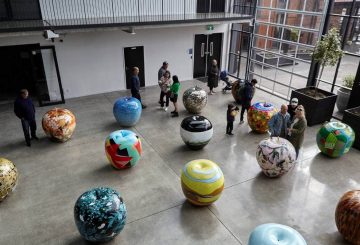新西兰嘻哈乐队Home Brew发行了十多年来的第一张专辑,名为 “Run It Back”。这张专辑于12月8日发行,这是乐队自10多年前发行同名第一张专辑以来的首次正式发行。
该小组成员汤姆·斯科特与卡拉·里卡德一起在录音室讨论了这张新专辑以及两次发行之间的长时间间隔。斯科特对这张专辑表示自豪,称其为 “美丽的东西”。他解释说,“Run It Back” 重温了乐队的起源,但也反映了他们的成长和对音乐的新视角。
斯科特分享说,该小组现在明白,一旦他们创作音乐,它就属于人民。他强调了放开自我和自我批评的重要性。新专辑中的歌词经常涉及困难时期和加工创伤,斯科特说,这是他们作品的中心主题。
他解释说,与布鲁斯相比,Home Brew一直是通过音乐来处理他们创伤的一种方式。他还透露这张专辑是一张分手专辑。该乐队早期的一些歌曲,斯科特曾经觉得这些歌曲在情感上过于原始,在歌迷们用自己的方式解释这些歌曲之后,对他来说有了新的含义。
在长达11年的录音中断期间,Home Brew参与了其他项目。斯科特说,现在是回到 Home Brew 的合适时机。他分享说,多年来,他发现拥抱自己的方方面面比划分和扮演某些角色更容易。他最后说,尽管花了11年时间才意识到这一点,但他现在感觉自己知道如何成为自己的方方面面。






























































